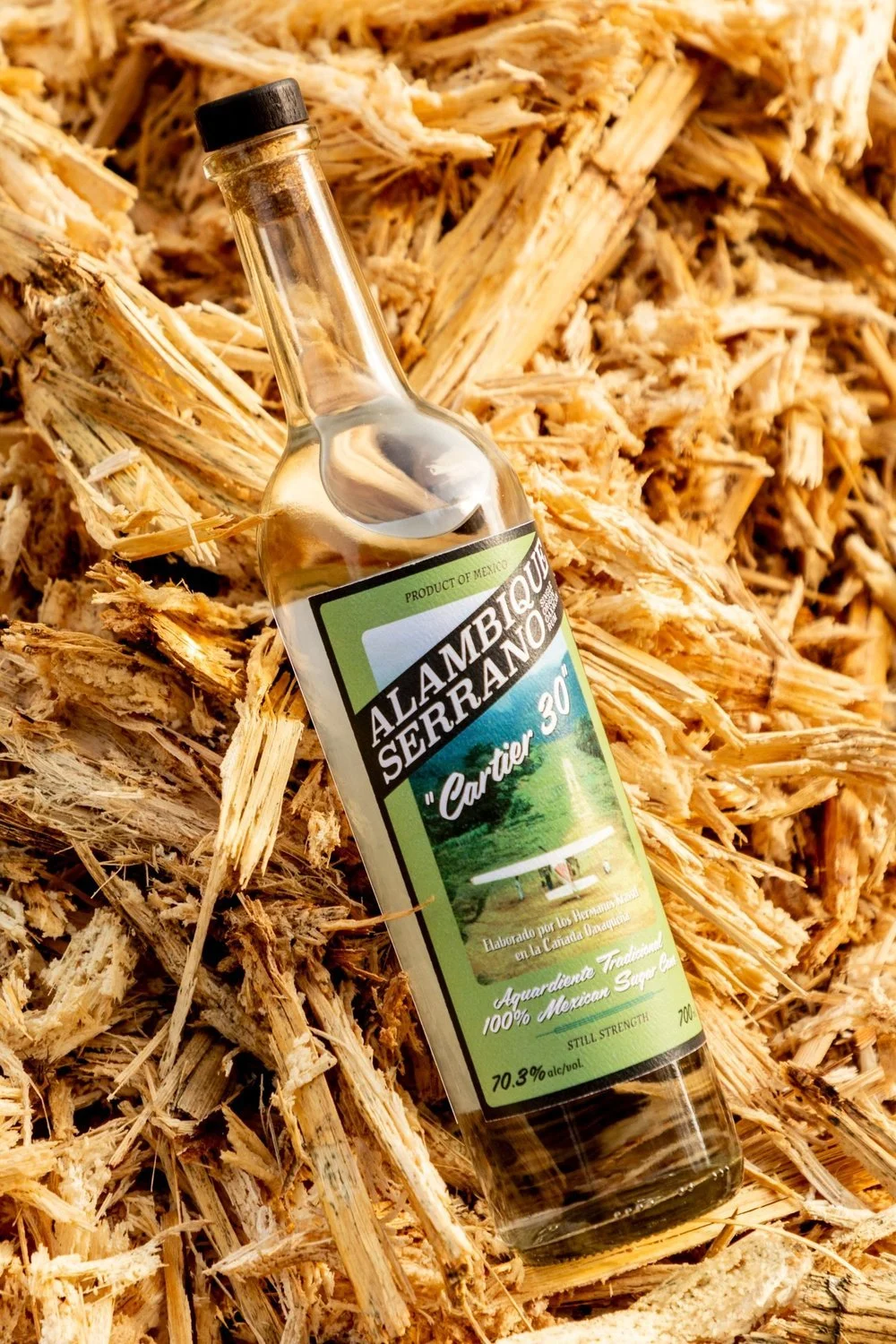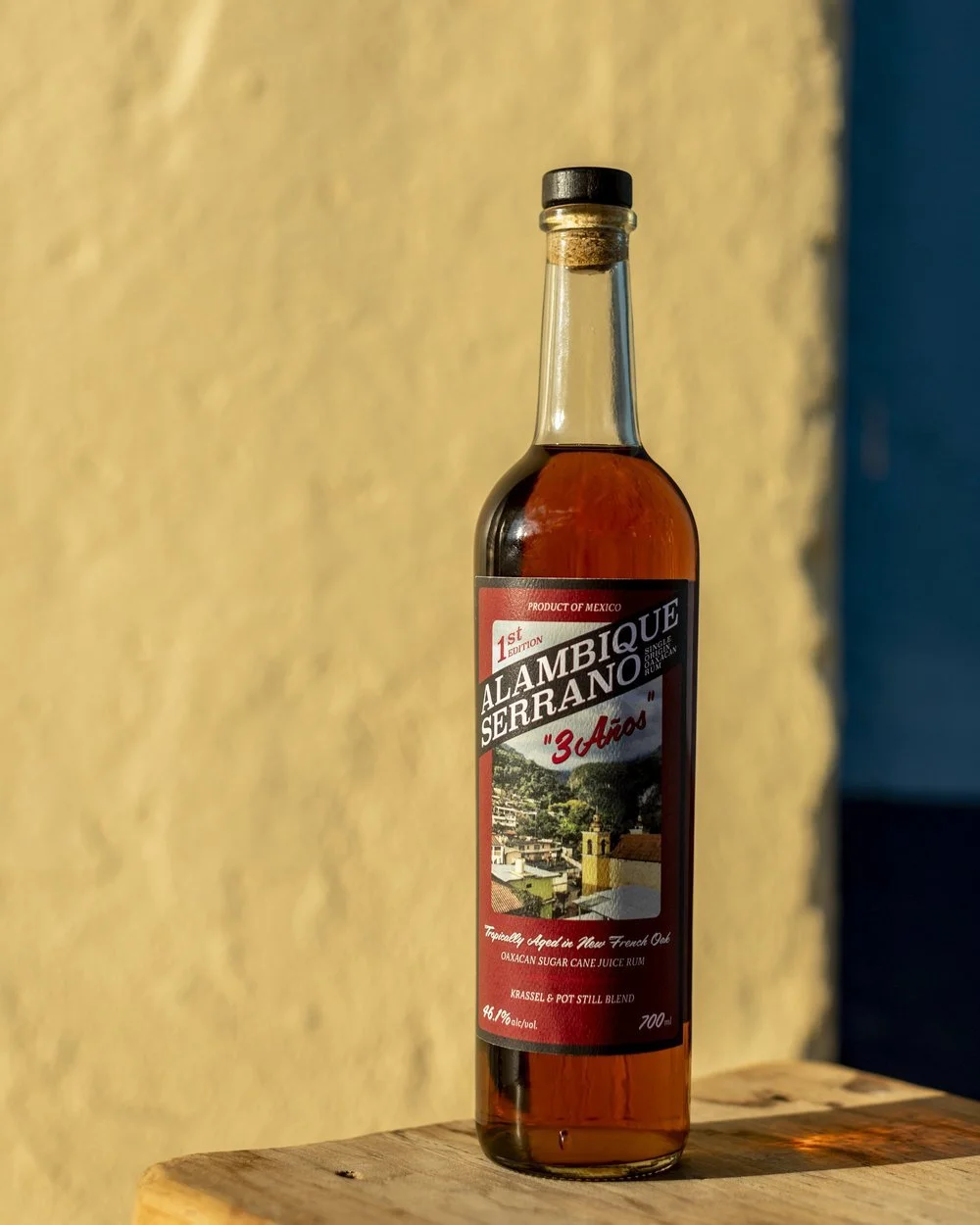Alambique Serrano
Third-generation distillers seamlessly blending modern and antiquated techniques.
100 YEARS IN THE MAKING
Brothers Isidoro, Rommel, William, and Axel Krassel Peralta continue the work that their grandfather Max started in the 1930s. An immigrant who fled his home country of Germany at the start of WWI, 16-year-old Max landed on the Gulf coast of Veracruz in 1917.
Rommel Krassel
With no knowledge of Spanish, Max began working any odd job that he could find. He eventually found himself in the mountainous Cañada region of Oaxaca, where he met and married his wife. It wasn’t long before he began distilling aguardiente on a coffee farm (at that time it was common for the haciendas to distill their own cane). After learning the ropes, Max set out on his own to begin distilling his own aguardiente, using a still he designed and built himself.
Max’s three sons followed in his footsteps, improving upon his still design and increasing aguardiente production. Word began to spread far away from Santa Maria Tlalixtac about the quality of the rum produced by the family.
Nowadays, Santa Maria Tlalixtac has a road into town - a four-hour unpaved trek from the nearest highway that is as stunning as it is treacherous. Grandpa Max has passed away, but his son Isidoro and four grandsons Rommel, Axel, William, and Isidoro keep the family tradition alive, working alongside one another in every aspect of production. Thanks to their hard work, aguardiente aficionados no longer need to hike for days to try a rum that has been three generations in the making.
Production
High-quality, hand-harvested cane from the steep hillsides of the Oaxacan Cañada region. Distilled in handmade stills and tropical aged in both dry and humid bodegas.
Agriculture
The makers of Alambique Serrano practice traditionally organic agriculture, leading to healthy and robust cane plants while preserving the integrity of their farmland.
Harvest
Organic sugarcane is hand-harvested from the laderas (hillsides) above the palenque (distillery), from altitudes that range from 700 to 1200 meters (2,300 - 3,900 feet) above sea level. The harvested cane is transported by horse, donkey, or mule to the trapiche to be milled that day.
Milling
Once a mound of cane (approximately 10 tons) is transported to the trapiche (mill), the master distillers begin extracting the juice from the cane with a Campollo 9” mill. The juice is then filtered and, by the force of gravity, transported in a system of hoses that can be up to 2 km long before reaching the distillery. The Krassel family moves the trapiche from location to location based on the season.
Fermentation
pine fermentation vats
Steel Tank
Once the fresh-squeezed cane juice arrives at the distillery, it is diverted to seven 1,200-liter stainless steel fermenting tanks that are stored outside of the distillery. The juice begins to ferment on its own, thanks to the presence of an abundance of wild yeasts that start and maintain the fermentation. Depending on the
climate, yeasts, and sugar content of the cane juice,
fermentation will last between six and ten days.
Pine Vat
For the small batches destined to be distilled in the copper alembic stills, the freshly-squeezed cane juice is diverted into a small bodega housing three pine vats, where the juice is fermented with ambient yeasts.
Distillation
Column
The “Krassel Still” invented by Max is considered a continuous still. It houses eight plates in the distillation column, produces no heads or tails, and the distillation ABV is regulated by the temperature of the cooling chambers and the flow of the fresh caña juice to the boiling chamber. It is an engineering marvel that needs to be seen to fully comprehend. Unlike the majority of Oaxacan aguardiente producers, the Krassel Family fires their still with diesel, rather than use the much more common method of powering their still with firewood. They believe this to be the best way to protect regional forests, which are increasingly threatened by deforestation.
Copper Alembics
Just recently, Rommel decided to explore distilling aguardiente in a more simplified system: with rustic copper pot alembic stills that are typical of mezcal production in the Oaxacan Valleys. The result is higher proof, heavier rums that are intensely aromatic and pleasantly oily.
Aging
The Krassel have four aging areas: a dry bodega located 5,600 feet above sea level, a humid bodega located in the cellar of the distillery at 2,000 feet above sea level; an even more humid bodega 100 meters from Rio Blanco, and a fourth, small cave that is exposed to the elements at the foot of Rio Blanco.
Both column still and pot still rums are aged in a combination of a range of barrels, including ex-whisky, ex-cognac, new French oak, ex-sherry and ex-mezcal.
Alambique Serrano
CARTIER 30
An unaged rum produced in the town of Santa Maria Tlalixtac, Oaxaca. Along the steep slopes of this region, the Krassel family plants, harvests, and distills 100% organic java sugarcane from altitudes as high as 4,000 feet above sea level.
Distilled from fresh cane juice, the name refers to a specific level of alcohol measured on the Cartier scale, which eventually fell out of use in favor of the alcohol by volume. 30 on the Cartier scale translates roughly to 70% abv and was the preferred strength for many folks in the village, where historically it’d be mixed with a bit of fresh cane juice and shot.
This traditional aguardiente is fermented naturally and distilled in the Krassel family’s custom-built still, originally designed by Max Krassel who immigrated to Mexico from Germany in the 1930s. The still produces no heads or tails and the distillation ABV is regulated by the temperature of the cooling chambers and the flow of the fresh cane juice to the boiling chamber.
Bottled at still strength (usually around 70%) abv with no sugar or water added. Funky, grassy, briney, and punchy, this is a rum for fans of unaged rums packed with flavor and character.
3 AŃOS
Aged for a minimum of three years in new French Oak, this first edition of Alambique Serrano 3 Años is a 12 cask blend of pot and Krassel column still rum. It has been gently brought to a bottling proof of 46.1% abv with distilled water sourced from the Río Blanco of Santa Maria Tlalixtac.
Like all Alambique Serrano rums, 3 Años was distilled from naturally-fermented cane juice harvested from the steep hillsides of the region. It has been bottled with no added sugar nor coloring.
There’s orange peel, cinnamon roll, apple juice, raisin cake, and black pepper on the nose. The palate is rich with cinnamon butter, rolled oats, orange marmalade, red hots, and cooling menthol.














